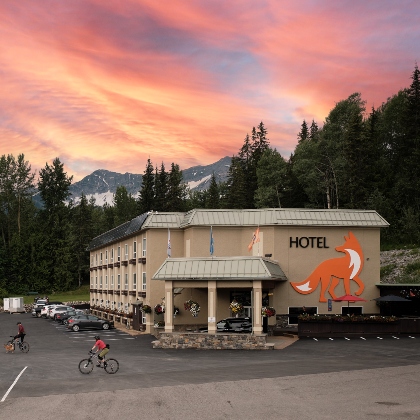Columbia Valley cultural tourism initiative
The timing is right to promote place-based, rather than activity-based, tourism

Directors of the Columbia Cultural Tourism Association are (L to R): Tony Berryman, Pat Bavin, Jessica Fairhart, Julie Brown, John Rouse, Alec Fleming, Jami Scheffer and Chris Evans. Missing are Andi Dzilums and Al Miller. — Photo by Ryan Bavin
Considering the numbers of visitors who flock to B.C.'s Columbia Valley to enjoy the assortment of snow sports, golf, water sports, biking and hiking available in the valley, why is a local group courting the cultural tourist as well?
Preparing for the future
It turns out that the Columbia Cultural Tourism Association (CCTA) has a long-term vision. As the athletic, active baby boom population diminishes in physical prowess, it nonetheless retains its massive buying power. The CCTA is focused on a comprehensive plan to foster socio-economic health for the communities in the valley—and that includes the visitor, the part-time resident and the full-time Columbia Valley citizen. The plan will make visible the aspects of life here that will attract repeat visitors and keep locals invested in exploring and enjoying their home turf.
There are many facets to consider, and the CCTA has employed the guidance of Steven Thorne, a Canadian specialist in place-based cultural tourism planning. Rather than depending on activities, events and other short-term attractions, the place-based model highlights the heritage, character, natural beauty, arts and cuisine of the area—the pulse that sustains life and livelihood in the region.
Pat Bavin is an artist in Invermere and a director on the board of the CCTA.
“The goal of the CCTA, in a nutshell, is to bring the 14 communities in the Columbia Valley into creative and fiscal well-being in terms of cultural tourism," he said. "We represent six sectors: human heritage, agricultural and industrial heritage, the arts, cuisine, wellness and natural history.
“Sport and recreation is also a key component, because they have their own culture. We are aligned with Kootenay Rockies Tourism through the DMOs (destination marketing organizations) at Invermere, Radium (Hot Springs) and Panorama (Mountain Village).”
It’s a big job
In early April 2014, the Columbia Valley Community Directed Funds Committee granted the CCTA the funds to employ a full-time co-ordinator. Filling that position will result in less duplication of effort among the Columbia Valley communities and possibly free up some volunteer time.
The cornerstones of this place-based tourism initiative are what Bavin calls the four Cs: communication, collaboration, co-ordination and co-operation. These are the foundational attitudes that he hopes will be brought to the table by the region’s players.
“We are proceeding on the basis of socio-economic development,” Bavin said. “If we focus on people, on our senses and our feelings, employing the four Cs to produce a high-quality product—that will ensure a good economic gain.”






Comments